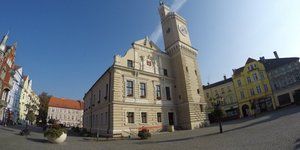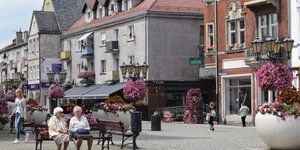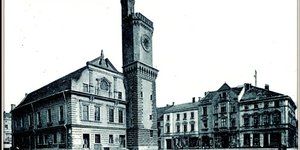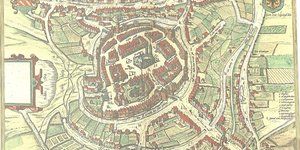History of the town
In the past, the population of the commune underwent dynamic changes over time. In the early Middle-ages, there were many slavic (eventually becoming Polish) settlements, one of which gave rise to a settlement, whose name „Swebosin” was first mentioned as early as in 1302. At that time, the settlement seemed to be in the hands of a Greater-Poland knight, Gniewomir. The settlement’s excellent location on the road spanning Pomerania and Silesia helped the place thrive, and in 1319, the settlement became a Silesian town named „Swebozin”, which hosted a castle (1329) ruled by the dukes of Żagań and Głogów. The town flourished with trade and local crafts, and in 1469, the town established its own, autonomic local government.
In 1482, Świebodzin formed a Silesian enclave, independent of the surrounding lands ruled by the Brandenburg and the Polish. The enclave was governed by the Jagellonians, who were the stewards of the Czech kings.

Since 1526, the town was governed the Czech Habsburg dynasty. The XVI century saw Świebodzin as a well-established and recognised centre of wool and baize manufacturing, a brewery town lively with markets and county fairs, craft guilds, and a home to the local outpost of the Holy Roman Empire authorities. The rapid development of the town was spurred by the trade connections with Saxony, Brandenburg and Greater-Poland. The town expanded and its population grew. It became an important cultural and religious centre in the area.
Thirty Years’ War brought a dramatic economic downturn to the town. It was partly destroyed and became politically unstable, with its population trickling away to emigrate elsewhere. The revival of the town did not come easy, as the political situation shook the region. In 1742, Świebodzin, with Silesia, was annexed by the Kingdom of Prussia. The times became harder. Restrictions were put on the local authorities, the autonomy became a thing of the past, the economic development was hindered by customs and taxes. With time, the Prussian administration managed to introduce reforms transforming the way in which the state machinery functioned. In the middle of the XIX century, the town became a part of Brandenburg, which injected the town with economic boom and social revival. Świebodzin and Sulechów formed a new Świebodzin-Sulechów district, which later became a recognised centre of weaving industry and machine manufacturing. The cultural and social life prospered. In the interwar period, Świebodzin, as a near-border town, played a crucial role on the east-west and north-south trade and communication routes.
During the Second World War, the life of the town’s citizens and the town’s social and economic role was harnessed by the German war doctrine. The local industry followed and catered for the war needs. The companies changed their profiles developing in new directions. The town was severed during the Soviet-German fighting at the beginning of 1945. The March of 1945 witnessed the formation of the Polish administration, as the town was now a part of Polish People’s Republic.
In Świebodzin, the main industrial branches that are present in the town today started their development in the 1960s. New plants and factories were founded, developing and manufacturing electromechanical and heat treatment technology, which has now become a hallmark of the town. Furniture, lumber processing and food producing companies grew in the area giving jobs to the town’s citizens. The advent of the market economy after 1989 paved way to the development of lots of private companies, often supported with foreign capital, as well as countless small businesses and service rendering companies, ranging from construction, manufacturing, to publishing and printing. Agriculture and food production have flourished, as modern farming and horticulture companies foster the region’s economy. It is also essential to mention some well-established companies and businesses manufacturing windows, automotive components, as well as numerous logistics and forwarding agencies.
Some major employers in the region are Docdata Fulfilment Sp. z o. o., EURO-BOX Sp. z o. o., Johnson Controls Polska Sp. z. o. o., KICO-Polska Sp. z o.o., Lubuskie Zakłady Drobiarskie Eldrob S.A., LUMBERG POLSKA Sp. z o.o. Sp. K., POLMAX S.A., PPH Postęp S.A., RECARO Aircraft Seating Polska Sp. z o.o., REMIX S.A., SECO/WARWICK S.A., SECO/WARWICK Europe Sp. z o. o., SPRICK ROWERY Sp. z o. o.
The social life of the town thrives thanks to many cultural institutions, with Muzem Regionalne (museum), ŚDK cultural centre, a public library, schools and association (Polish Eastern Territories Association) to name a few. Świebodzin is the seat of a modern orthopedic clinic, Lech Wierusz Lubuskie Orthopaedist Centre.















